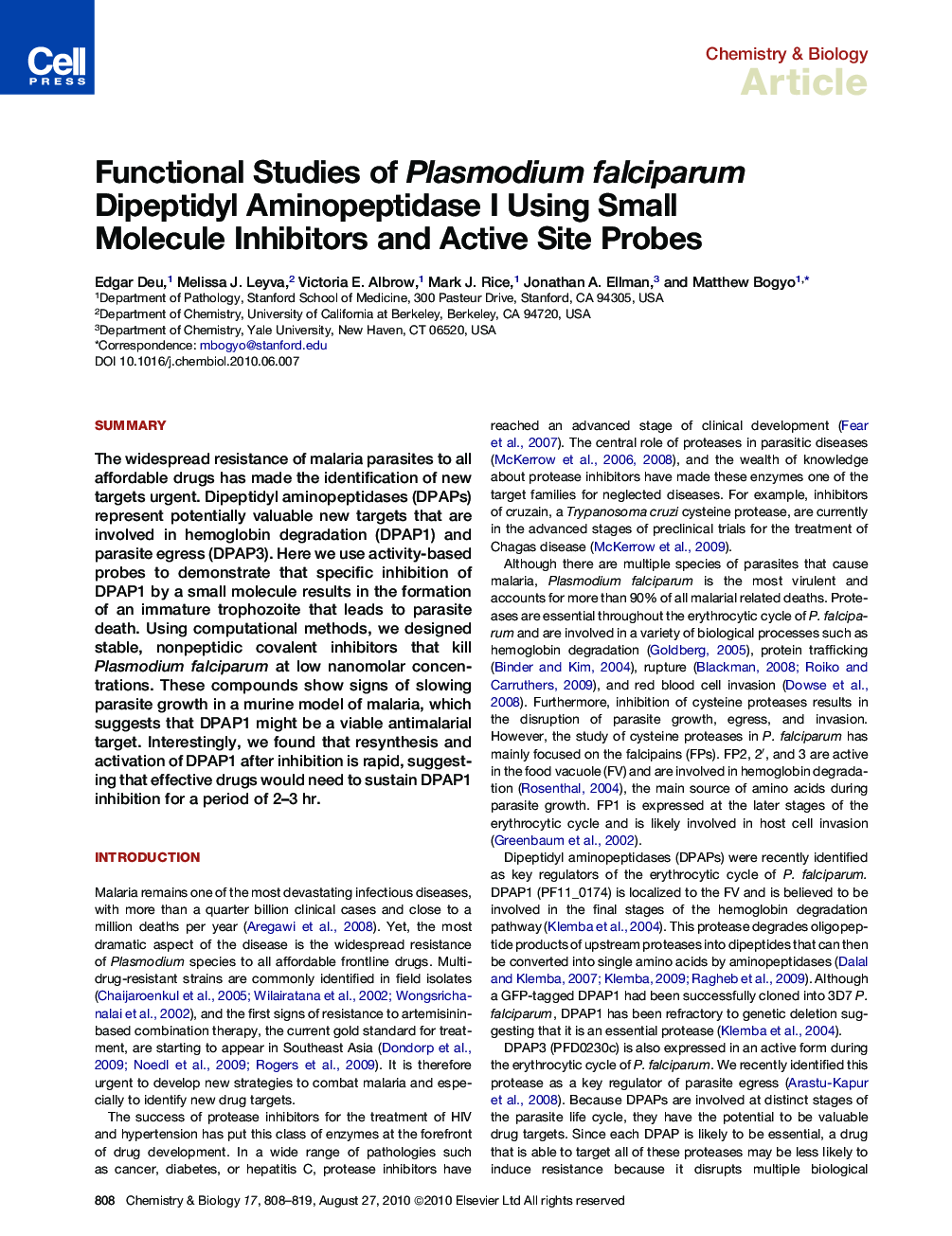| Article ID | Journal | Published Year | Pages | File Type |
|---|---|---|---|---|
| 1392395 | Chemistry & Biology | 2010 | 12 Pages |
SummaryThe widespread resistance of malaria parasites to all affordable drugs has made the identification of new targets urgent. Dipeptidyl aminopeptidases (DPAPs) represent potentially valuable new targets that are involved in hemoglobin degradation (DPAP1) and parasite egress (DPAP3). Here we use activity-based probes to demonstrate that specific inhibition of DPAP1 by a small molecule results in the formation of an immature trophozoite that leads to parasite death. Using computational methods, we designed stable, nonpeptidic covalent inhibitors that kill Plasmodium falciparum at low nanomolar concentrations. These compounds show signs of slowing parasite growth in a murine model of malaria, which suggests that DPAP1 might be a viable antimalarial target. Interestingly, we found that resynthesis and activation of DPAP1 after inhibition is rapid, suggesting that effective drugs would need to sustain DPAP1 inhibition for a period of 2–3 hr.
Graphical AbstractFigure optionsDownload full-size imageDownload high-quality image (184 K)Download as PowerPoint slideHighlights► Specific DPAP1 inhibition impairs malaria parasites growth ► P. falciparum is able to restore DPAP1 activity after a short period of inhibition ► Nonpeptidic DPAP inhibitors are more potent and stable than peptidic inhibitors
